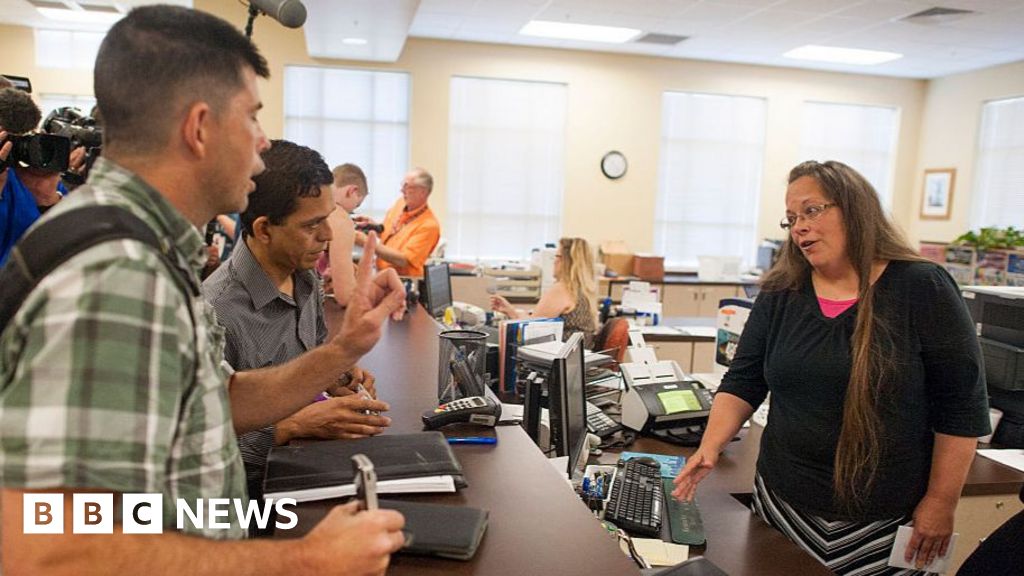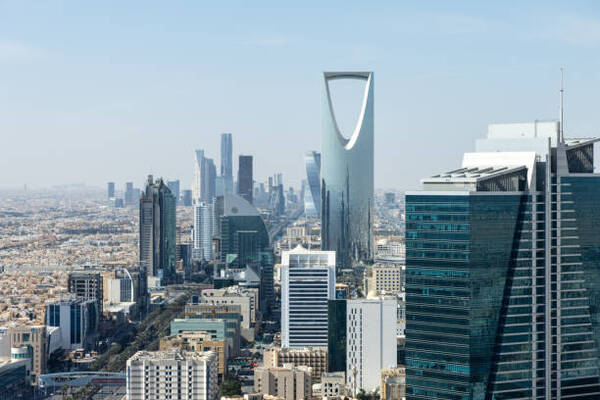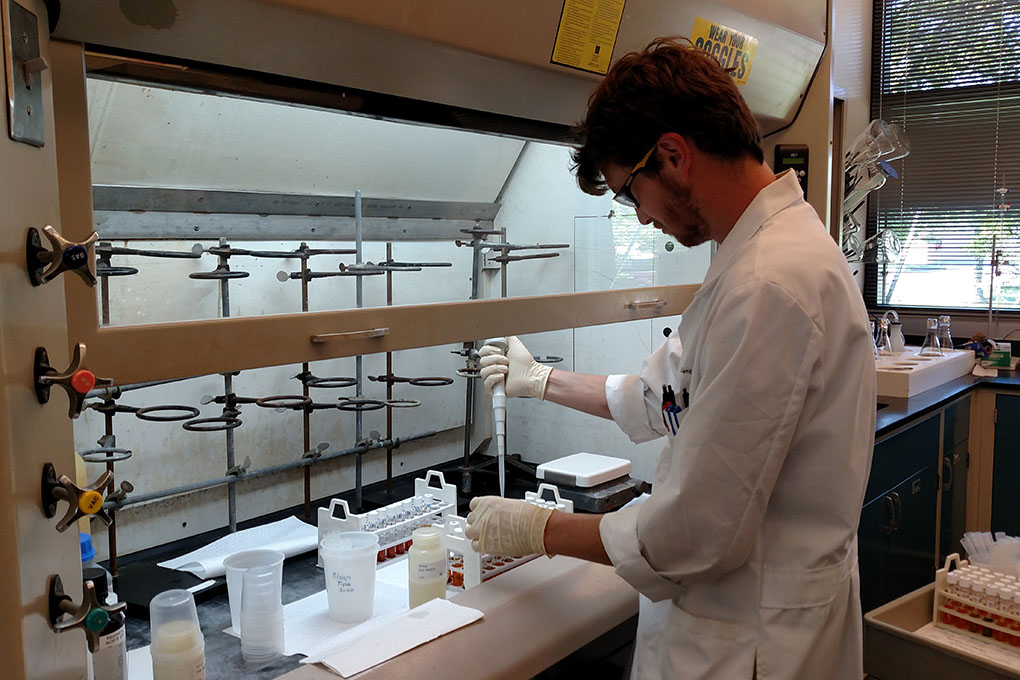Community Impact Award, Hearing Times Set, and a Water Conservation Update: City Council Meeting Recap – KRSL.com

Russell City Council Meeting Report: July 15, 2025
I. Call to Order and Community Recognition
The regular meeting of the Russell City Council was held on Tuesday, July 15, at 4:30 PM. The session commenced with a presentation of the Community Impact Award to Ms. Connie Blanke by Mayor Cross and Erik Stone of KRSL KZRS. This award acknowledges vital citizen contributions that strengthen community bonds and social cohesion, directly supporting SDG 11 (Sustainable Cities and Communities).
II. Infrastructure and Environmental Sustainability
A. Water Resource Management and Conservation (SDG 6)
A significant portion of the meeting was dedicated to water resource management, a critical component of SDG 6 (Clean Water and Sanitation). Key developments include:
- Water Utilities Director Randy Baker provided a general operational update.
- Following a presentation by Mr. Baker and City Manager Kayla Schneider, the Council addressed the triggering of a water warning threshold.
- A motion was unanimously passed to place the City of Russell under a Stage 2 water warning, mandating enhanced conservation efforts to ensure sustainable water use for the community. Further details are to be provided in a formal press release.
B. Energy Infrastructure Modernization (SDG 7 & SDG 9)
In a move to bolster resilient infrastructure and ensure access to reliable energy, the Council approved a major investment. This action aligns with SDG 7 (Affordable and Clean Energy) and SDG 9 (Industry, Innovation, and Infrastructure).
- Electric Utilities Director Dave Sturgeon presented a proposal for the acquisition of a 10 MVA Virginia Step-Up Substation Transformer.
- The Council unanimously approved the purchase at a cost of $515,469, with an additional freight charge of $15,000.
III. Economic Development and Community Vitality
A. Promotion of Local Culture and Economy (SDG 8 & SDG 11)
The Council approved two measures aimed at fostering local economic activity and enhancing community life, contributing to SDG 8 (Decent Work and Economic Growth) and SDG 11 (Sustainable Cities and Communities).
- Special Event Permit: A special event application for the Saddle Club’s Beer Garden and Concert, scheduled for July 22-26, was unanimously approved.
- Occupancy Agreement: An occupancy agreement was unanimously approved for Russell Main Street Inc. to utilize the Visitor Center. This partnership aims to promote local events and attractions, strengthening the city’s economic and cultural fabric.
B. Public Space Development (SDG 11)
City Manager Schneider reported on a proposal from the Rotary Club to seek grant funding for the rehabilitation of public recreational areas. The project, which includes converting horseshoe pits into cornhole spots, was discussed as a potential enhancement to inclusive and accessible public spaces, a key target of SDG 11. No formal action was taken.
IV. Governance, Transparency, and Partnerships
A. Institutional Accountability and Public Finance (SDG 16)
Reinforcing its commitment to transparent and accountable institutions as outlined in SDG 16 (Peace, Justice, and Strong Institutions), the Council scheduled several public hearings:
- Conflict of Interest Hearing: A hearing regarding a conflict-of-interest policy for a city contracting project is set for Tuesday, August 5, at 4:30 PM.
- Fiscal Hearings: Hearings for the Revenue Neutral Rate and the 2026 Budget are scheduled for September 2 at 4:30 PM.
B. Sustainable Urban Planning (SDG 11)
The City Manager advised the Council that a future meeting will include an ordinance concerning the use of campers as permanent residences within residential zones. This addresses urban planning and housing challenges, relevant to SDG 11.
C. Inter-Governmental Collaboration (SDG 17)
In an effort to foster collaboration, a joint meeting with the Hays City Council has been scheduled. This initiative exemplifies SDG 17 (Partnerships for the Goals) by building cooperative partnerships between local governments. The meeting will take place on August 27 at 4:30 PM in the Russell Council Chambers.
V. Adjournment and Forward Schedule
The next regular meeting of the City Council is scheduled for Tuesday, August 5, 2025.
1. Which SDGs are addressed or connected to the issues highlighted in the article?
-
SDG 6: Clean Water and Sanitation
The article explicitly mentions a “water conservation update” and the City Council’s decision to move into a “stage 2 water warning” because a trigger was set off. This directly relates to the sustainable management of water resources.
-
SDG 7: Affordable and Clean Energy
The council’s approval to purchase a “10 MVA Virginia Step-Up Substation Transformer” for $515,469 is a significant investment in the city’s electrical infrastructure, which is fundamental to ensuring a reliable energy supply for its residents.
-
SDG 9: Industry, Innovation and Infrastructure
This goal is addressed through the purchase of the new substation transformer. This action represents an upgrade to critical infrastructure, aiming to build resilient systems that support the community and its economic activities.
-
SDG 11: Sustainable Cities and Communities
Several points in the article connect to this goal. The discussion about an ordinance for “camper use as permanent residence” relates to housing and urban planning. The proposal by the Rotary Club to “rehab the horseshoe pits and change some of that area into cornhole spots” pertains to the development of public and recreational spaces. Furthermore, the agreement allowing Russell Main Street Inc. to use the Visitor Center to promote local events contributes to the city’s cultural and social sustainability.
-
SDG 16: Peace, Justice and Strong Institutions
The article demonstrates this goal in action. The City Council is a local institution conducting its business transparently through a public meeting. Setting specific hearing dates for a “conflict-of-interest policy” and the “Revenue Neutral Rate and 2026 Budget” showcases a commitment to accountability and inclusive governance.
-
SDG 17: Partnerships for the Goals
The announcement of a “joint meeting with the Hays City Council” is a direct example of a public-public partnership between two municipalities to address shared interests. The potential collaboration with the Rotary Club on recreational spaces also represents a partnership between a public institution and a civil society organization.
2. What specific targets under those SDGs can be identified based on the article’s content?
-
Target 6.4: Increase water-use efficiency and ensure sustainable withdrawals
By implementing a “stage 2 water warning,” the City of Russell is actively managing its water consumption and promoting efficiency to address water stress, which aligns directly with this target’s aim to tackle water scarcity through better management.
-
Target 7.1: Ensure universal access to affordable, reliable and modern energy services
The purchase of a new substation transformer is a direct investment in the reliability of the city’s electricity supply, which is a crucial step in ensuring residents have consistent access to energy.
-
Target 9.1: Develop quality, reliable, sustainable and resilient infrastructure
The acquisition of the electrical transformer is a clear action to develop and upgrade local infrastructure, making the city’s power grid more resilient and reliable for its citizens.
-
Target 11.3: Enhance inclusive and sustainable urbanization and human settlement planning
The council’s plan to introduce an “ordinance regarding camper use as permanent residence” is an act of local urban planning and management, addressing housing issues within the city.
-
Target 11.7: Provide universal access to safe, inclusive and accessible, green and public spaces
The discussion about the Rotary Club’s project to “rehab the horseshoe pits” and create “cornhole spots” directly supports the goal of improving and providing access to public recreational spaces for the community.
-
Target 16.6: Develop effective, accountable and transparent institutions at all levels
The entire article, which reports on a public City Council meeting, exemplifies this target. Specifically, the formal setting of public hearings for a conflict-of-interest policy and the city budget demonstrates the council’s function as an accountable and transparent institution.
-
Target 17.17: Encourage and promote effective public, public-private and civil society partnerships
The planned “joint meeting with the Hays City Council” is a clear example of a public-public partnership. The potential project with the Rotary Club is an example of a public-civil society partnership.
3. Are there any indicators mentioned or implied in the article that can be used to measure progress towards the identified targets?
-
Indicator for Target 6.4:
The primary indicator is the city’s water conservation status. The move to a “stage 2 water warning” is a specific measure. Progress can be tracked by monitoring changes in this status (e.g., moving back to Stage 1 or avoiding Stage 3), which would reflect the effectiveness of water conservation measures.
-
Indicator for Targets 7.1 and 9.1:
A key indicator is the financial investment in energy infrastructure, specified as the “purchase [of] the transformer in the amount of $515,469.” The successful installation and operation of this transformer would be a measure of progress.
-
Indicator for Target 11.3:
The indicator is the development and adoption of new urban planning regulations. The article points to the future introduction of an “ordinance regarding camper use as permanent residence.” The existence of this ordinance would be a measurable outcome.
-
Indicator for Target 11.7:
An indicator would be the number of improved or newly created public recreational facilities. The “rehab [of] the horseshoe pits” and the creation of “cornhole spots” serve as specific, measurable projects.
-
Indicator for Target 16.6:
The number of public hearings held on key governance issues serves as an indicator of transparency. The article explicitly mentions the scheduling of hearings for a “conflict-of-interest policy” and the “2026 Budget.”
-
Indicator for Target 17.17:
The number of formal inter-governmental and civil society partnerships is a direct indicator. The article identifies two such instances: the “joint meeting with the Hays City Council” and the potential project with the “Rotary Club.”
4. Table of SDGs, Targets, and Indicators
| SDGs | Targets | Indicators |
|---|---|---|
| SDG 6: Clean Water and Sanitation | 6.4: Increase water-use efficiency and ensure sustainable withdrawals. | The implementation of a “stage 2 water warning” as a measure of water stress. |
| SDG 7: Affordable and Clean Energy | 7.1: Ensure universal access to affordable, reliable and modern energy services. | Financial investment in energy infrastructure (purchase of a $515,469 transformer). |
| SDG 9: Industry, Innovation and Infrastructure | 9.1: Develop quality, reliable, sustainable and resilient infrastructure. | The purchase and installation of a new 10 MVA substation transformer. |
| SDG 11: Sustainable Cities and Communities | 11.3: Enhance inclusive and sustainable urbanization and human settlement planning. | The introduction of an “ordinance regarding camper use as permanent residence.” |
| 11.7: Provide universal access to safe, inclusive and accessible, green and public spaces. | The rehabilitation of horseshoe pits and the creation of new cornhole spots. | |
| SDG 16: Peace, Justice and Strong Institutions | 16.6: Develop effective, accountable and transparent institutions at all levels. | The scheduling and holding of public hearings for a conflict-of-interest policy and the city budget. |
| SDG 17: Partnerships for the Goals | 17.17: Encourage and promote effective public, public-private and civil society partnerships. | The holding of a “joint meeting with the Hays City Council” and collaboration with the Rotary Club. |
Source: krsl.com

What is Your Reaction?
 Like
0
Like
0
 Dislike
0
Dislike
0
 Love
0
Love
0
 Funny
0
Funny
0
 Angry
0
Angry
0
 Sad
0
Sad
0
 Wow
0
Wow
0








































































